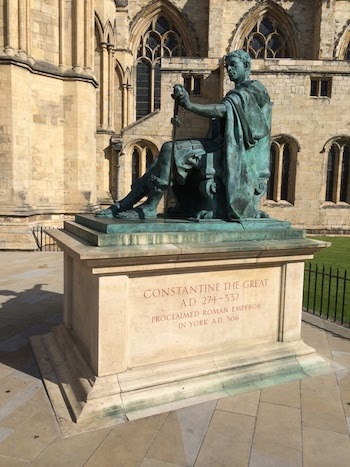
A couple of blogs back we glazed over a pretty interesting historical tidbit. The Roman emperor Constantine the Great was crowned (“laurel-wreathed” actually) in what is today’s city of York, England. We don’t know how many–if any–other Roman emperors were crowned outside of Rome, but we don’t think it could be too many. And even if it were dozens, the fact that Constantine was crowned in this English city gives York a wonderful little claim to fame.
For those of you who might need a history refresher, it was Constantine who legitimized Christianity in the Roman empire in 312 AD, paving the way for the establishment of Christianity as a major world religion and the predominant religion of the western world. As the legend goes, on the eve of a critical battled with the rebel Maxentius, whose army’s numbers were twice that of Constantine’s, Constantine saw the vision of his victorious army bearing the sign of the cross. In another version, an angel appeared to him in a dream, and in yet another version Jesus himself appeared and told Constantine “with this sign, you will conquer.” Regardless of how he received the vision, the next morning he ordered his army to paint the cross on their shields and, against overwhelming odds, defeated Maxentius.
Personally, we think a little bird whispered the vision in Constantine’s ear, that little bird being his mother, Saint Helen. She had converted to Christianity prior to Constantine’s civil war with Maxentius and had a certain amount of influence over her emperor son since her husband, Constantine’s father and the previous emperor, was killed in battle in York (Eboracum at the time). It seems only logical that Constantine would have heard a little about Christianity prior to the battle, and that, perhaps a little desperate, decided to give the power of the cross a little test. Victory was all it took to convince Constantine to convert and to decree it a legal religion for the empire.
Understanding the impact of a historical event like this helps give perspective to the places you visit, and standing in the York Minster Cathedral, above the site of the Roman basilica of Eboracum, you’ll appreciate that perspective all the more.






